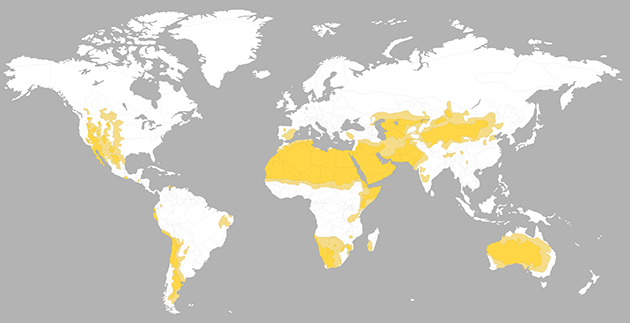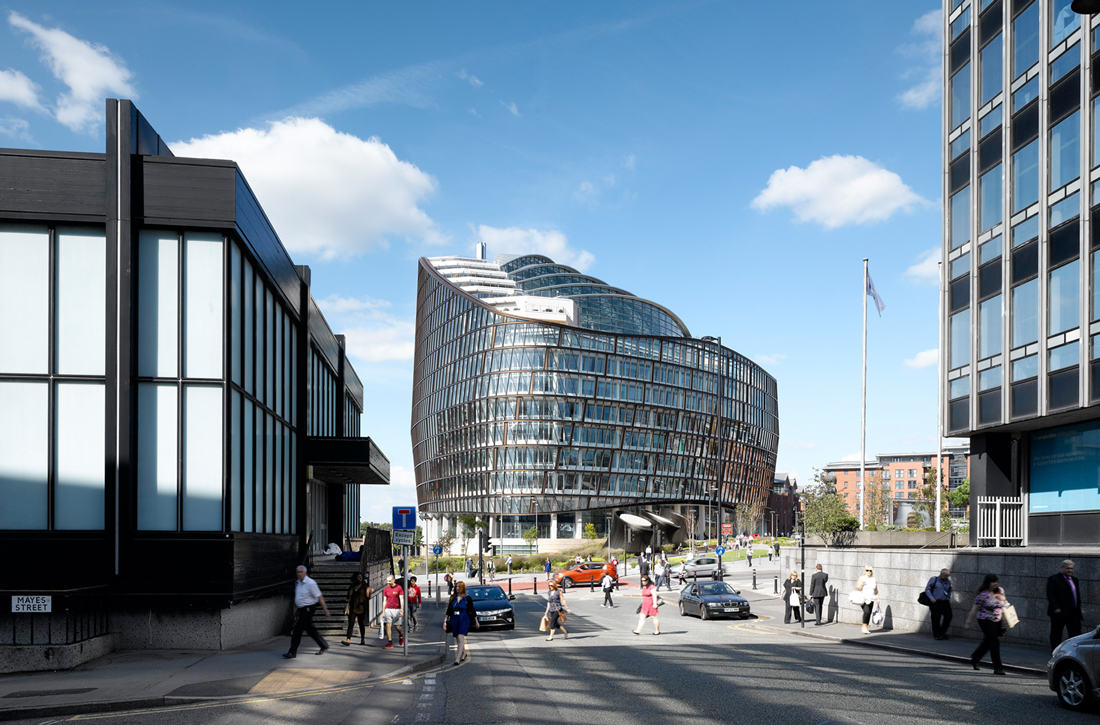 © Hufton+Crow
© Hufton+Crow
PROJECT INFO
Building type:
Offices
Year:
2017
Project Status:
Built
Gross Area:
70000 Sqm
Certificates:
LEED v2.2 NC Platinum
Climatic zone:
Arid
MY LAST SEEN PROJECTS
PROJECT DESCRIPTION
KAPSARC (King Abdullah Petroleum Studies and Research Centre) is a non-profit institution for independent research into policies that contribute to the most effective use of energy to provide economic and social wellbeing across the globe.
KAPSARC develops policies and economic frameworks that reduce the environmental impact and overall costs of energy supply and enable practical technology-enabled solutions to use energy more efficiently.
Collaborating with international research centres, public policy organizations, worldwide government institutions and global industry, KAPSARC brings together leading experts from around the world to tackle energy challenges; freely sharing its knowledge, insights and analytical frameworks.
The 70,000m² KAPSARC campus incorporates five key buildings: the Energy Knowledge Centre; the Energy Computer Centre; a Conference Centre with exhibition hall and 300-seat auditorium; a Research Library with archives for 100,000 volumes; and the Musalla.
The primary organising strategy of the design is a cellular, partially modular system that integrates different departmental buildings as a single ensemble with interconnecting public spaces.
Hexagonal prismatic honeycomb structures use the least material to create a lattice of cells within a given volume. This structural and organizational principle determined KAPSARC’s composition as an amalgamation of crystalline forms that emerges from the desert landscape, evolving to best respond to the environmental conditions and internal programme requirements. The honeycomb grid is compressed towards its central axis as an extension of the natural wadi that runs to the west.
A research centre is by its very nature a forward-looking institution and KAPSARC’s architecture also looks to the future with a formal composition that can expand or adapt without compromising the centre’s visual character.
The modular design generates consistent organisational, spatial and structural strategies that drive all elements of the plan. The six sides of the hexagonal cells also offer greater opportunities for increased connectivity when compared to rectangular cells with only four sides.
KAPSARC’s five buildings differ in size and organisation to best suit their use. Each building is divided into its component functions and can be adapted to respond to changes in requirements or working methods. Additional cells can readily be introduced by extending KAPSARC’s honeycomb grid for future expansion of the research campus.
The specific arrangement and form of KAPSARC’s buildings contribute to softening the strong light and heat of the Riyadh Plateau.
The buildings of the campus surround a large public courtyard shaded by canopies supported from a forest of crafted steel columns. Presenting a solid, protecting shell to the harsh sunlight from the south, the KAPSARC campus opens to north and west; encouraging prevailing winds from the north to cool the courtyard during temperate months and facilitating connections with any future expansion of the campus to the north, as well as creating connections with the researcher’s residential community to the west.
Privileging the pedestrian, each of the buildings within the campus is entered through this central public courtyard that also serves as a meeting space and link between buildings during temperate seasons. An underground link also connects the main buildings on the campus for use at the hottest times of the year.
KAPSARC’s architecture promotes transparency and encourages an active exchange between researchers and visitors. By strategically off-setting floorplates, spatial layering effects are created throughout the centre to provide views to the floors above and below; offering transparency between floors in public areas designed as collective zones for researchers to meet informally and exchange ideas. Secure areas and rooms requiring privacy are located within areas of each building where floorplates overlap.
AWARDS
SUSTAINABILITY FEATURES
Shading system
High efficient façade
Photovoltaics
Water-saving sanitary appliances
Sustainable building materials
Low-emitting materials and finishes
Sustainable sourced timber
Smart design (passive design strategies)
Daylighting maximised
Waste reduction commitment
SUSTAINABILITY STRATEGY
KAPSARC’s design has solid technical and environmental considerations at its heart, drawing the five elements of the campus into a unified whole. Recently awarded LEED Platinum certification by the US Green Building Council, the centre is designed in response to the environmental conditions of the Riyadh Plateau to minimise energy and resource consumption.
Orientated for the sun and wind conditions, the crystalline forms of the prismatic architectural cells gain in height towards the south, west, and east to shield internal spaces from direct sunlight, while the courtyards within are oriented to the north and northwest to bring indirect sunlight into the spaces below.
With its strong, protective shell on the exterior that shields from the extremes in weather, KAPSARC’s architecture is porous within. Specific hexagonal cells strategically located within each building are left open to create a series of sheltered courtyards that bring softly-controlled daylight into the interior.
‘Wind-catchers’ integrated within the roof profiles on the southern sides of each courtyard catch the prevailing winds from the north, cooling each courtyard.
KAPSARC was recently awarded LEED Platinum certification from the United States Green Building Council (USGBC) through its application of passive and active solutions including:
* A 45% reduction in energy performance (compared to the ASHRAE baseline standards) achieved via KAPSARC’s building massing and orientation, façade optimisation, system selection and the solar PV array located on the roof of the south-facing Conference Centre with a capacity of 5,000MWh/year.
* All KAPSARC’s potable water is recycled and reused on site and 100% of irrigation water is from non-potable sources.
* 40% of KAPSARC’s construction materials have been sourced from within 500 miles, and 30% of materials made with recycled content.
* 98% of all wood certified by the Forest Stewardship Council (FSC).
* 4,000 tonnes of waste separated and diverted from landfill.
KAPSARC has also been named Saudi Arabia’s ‘smartest’ building in the Honeywell Smart Building Awards programme. Based on criteria that include environmental sustainability, safety and productivity, KAPSARC received outstanding scores across all three categories.
ENERGY DATA
Energy consumption:
N/A (N/A )
Consumption type:
Annual carbon footprint:
N/A (N/A )
Climate zone:
Arid
Min. temperature =
N/A
Max temperature =
N/A
RH =
N/A

CLIENT
Client:
Aramco
DESIGNERS
Architect:
Architect:
Zaha Hadid Architects , Patrik Schumacher , Charles Walker , Lars Teichmann , John Simpson , Alejandro Diaz , Anas Younes , Annarita Papeschi , Aritz Moriones , Ayca Vural Cutts , Carlos Parraga-Botero , Javier Rueda , Malgorzata Kowalczyk , Michal Wojtkiewicz , Monika Bilska , Sara Criscenti , Stella Dourtme , Fabian Hecker , Michael Powers , Brian Dale , Fulvio Wirz , Elizabeth Bishop , Saleem A. Jalil , Maria Rodero , Lisamarie Ambia , Judith Wahle , Bozana Komljenovic , John Randle , John Szlachta , Adrian Krezlik , Alexander Palacio , Amdad Chowdhury , Amit Gupta , Andres Arias Madrid , Britta Knobel , Camiel Weijenberg , Carine Posner , Claire Cahill , Claudia Glas-Dorner , DaChun Lin , Daniel Fiser , Daniel Toumine , David Doody , David Seeland , Deniz Manisali , Ebru Simsek-Lenk , Inês Fontoura , Jaimie-Lee Haggerty , Jeremy Tymms , Julian Jones , Jwalant Mahadevwala , Lauren Barclay , Lauren Mishkind , Mariagrazia Lanza , Melike Altinisik , Michael Grau , Michael McNamara , Mimi Halova , MohammadAli Mirzaei , Mohammed Reshdan , MyungHo Lee , Muriel Boselli , Nahed Jawad , Natacha Viveiros , Navvab Taylor , Neil Vyas , Nicola McConnell , Pedro Sanchez , Prashanth Sridharan , Roxana Rakhshani , Saahil Parikh , Sara Saleh , Seda Zirek , Shaju Nanukuttan , Shaun Farrell , Sophie Davison , Sophie Le Bienvenu , Stefan Brabetz , Steve Rea , Suryansh Chandra , Talenia Phua Gajardo , Theodor Wender , Yu Du
Interior designer:
Woods Bagot
CONSULTANTS
Building physics consultant:
ARUP
Building services engineer:
ARUP
Cost consultant:
Davis Langdon
Energy consultant:
ARUP
Lighting consultant:
ARUP , OVI
Manager:
DaeWha Kang , Lars Teichmann , Charles Walker
Other:
ARUP
Specialist consultant:
ARUP , Gross. Max , Eastern Quay and GWP , Event , Tribal
Structural Engineer:
ARUP
CONTRACTORS
Supplier:
OVI , Eastern Quay and GWP , BASWA acoustic AG , Sonogamma
OTHER PROJECTS BY TEAM
SIMILAR PROJECTS

Avenida República do Chile - Centro, Rio - Rio de Janeiro, Brazil | 2013

.jpg)

.png)

Via Filippo Turati, 25, 20121 Milano, Italia | 2012

Via Energy Park, 20871 Torri Bianche MB, Italy | 2009


.jpg)
.jpg)



.jpg)
.jpg)

.jpg)
.jpg)
Seattle, WA, USA | 2012
.jpg)









Via Umberto Forti, 1, 56121 Montacchiello PI, Italia | 2016

.jpg)
Via Chiese, 72, 20126 Milano MI, Italia | 2018
.jpg)
Viale della Liberazione, 20124 Milano MI, Italia | 2017
.jpg)
Via Bernina, 12, 20159 Milano MI, Italia | 2012

.jpg)


New Cairo City, Cairo Governorate, Egypt | 2016




Parma, Province of Parma, Italy | 2018
.JPG)
.png)



Manhattan, New York, NY, USA | 2016

Via Fabio Filzi, 29, 20124 Milano MI, Italia | 2015

Piazza Tommaso Edison, 20123 Milano MI, Italia | 2017
